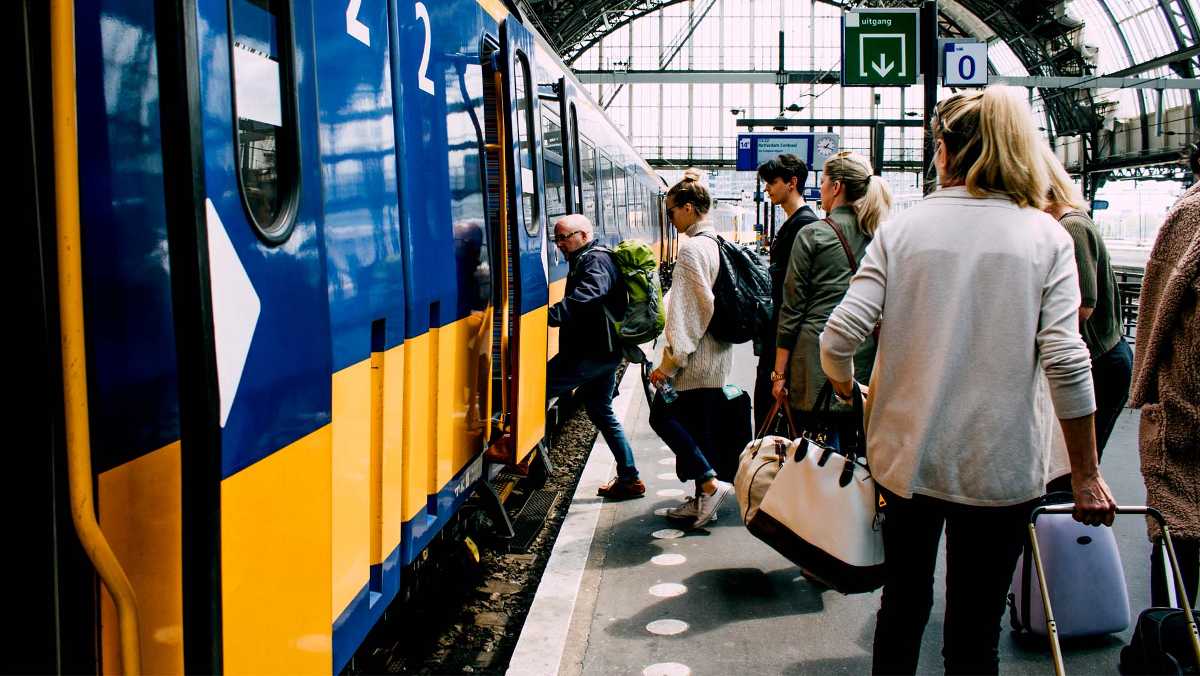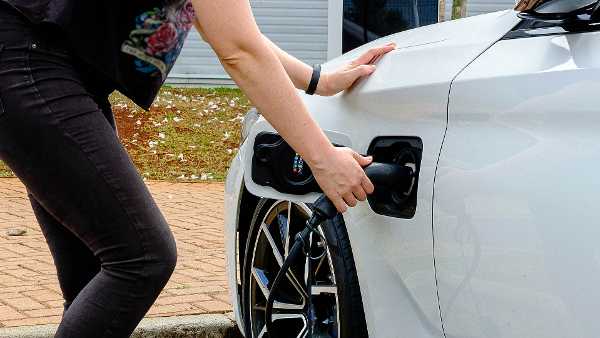Travel by public transport helps you cut business costs

- Background
- Edited 14 August 2024
- 3 min
- Managing and growing
- Sustainability
Do you want to save money while at the same time reducing your company’s carbon emission? Then have your employees take the train or the bike, instead of driving their car to work. An allowance for commuting by public transport will cost you between 40 and 70% less than a lease plan or car allowance. You can reduce your company’s carbon emissions by up to 35%. You will experience these 4 benefits if you let your staff travel by public transport.
If you choose public transport, then you are also well prepared for the future. Fuel prices are high and more and more cities are establishing environmental and low-emission zones for polluting vehicles. Let your staff travel by public transport and benefit from four advantages.
1. Saving costs
The (in Dutch), published by organisations Anders Reizen and Natuur & Milieu, states that you save a lot with a second-class public transport (openbaar vervoer, OV) card. On average, it is 40% cheaper than mileage allowances for private cars. Compared to leased cars, you are even 70% cheaper. These savings will only increase as fuel prices rise further. On average, a journey by public transport costs 14 cents per kilometre, compared to 23 cents for private cars and 49 cents for lease cars. If you reimburse car use, in addition to these costs you often have to take into account parking costs at your business location.
Increased mileage allowance
Since 1 January 2024, the mileage allowance for passenger cars has increased from 21 cents to 23 cents. This means an increase in the costs your employees incur using their personal vehicles. In 2025, the allowance remains at 23 cents.
2. Less paperwork
Switching to public transport will also save you time on administration. If you reimburse private or lease car use, you may only pay a fixed travel if your employees travel to work at least 60% of their working days. If your employees do not achieve this, you may only reimburse the actual kilometres travelled. You then have to keep your own records for claimed kilometres and additional items such as parking costs. If you switch to public transport, you will have less administration. The transport company will keep track of this for you and you will receive a collective invoice at the end of the month. Also, if your employees use additional transport options such as the OV-fiets, this will be on the same invoice.
3. Convenience
Earlier research by the KiM Netherlands Institute for Transport Policy Analysis shows that people choose public transport because this allows them to avoid traffic-related stress and parking problems and make better use of their travel time.
Peter Soonius from Natuur & Milieu: “Look, for example, at someone travelling from Amsterdam city centre to the centre of Utrecht. This journey costs approximately the same in time and money whether you are taking the car or public transport. However, the journey by car is so cumbersome that public transport seems a lot more appealing.”
There are also disadvantages to travel by public transport: for one, a random journey from A to B takes longer, on average, by public transport than by car. An added factor is that motorists tend to significantly travel time by public transport. They think that a journey that takes one hour by car takes twice as long by public transport, whereas in reality a journey that is 60 minutes by car will generally take you 90 minutes by public transport.
"An added benefit of travelling by train is that you can work on your laptop, which means you can consider your travel time – or at least part of it – as working time. This is a strong argument for employers to get their employees on board if employers want to make the transfer to public transport.”
4. You reduce your carbon emissions
The Netherlands wants to be climate neutral by 2050. This will only succeed if companies reduce their CO2 emissions. If you opt for public transport compensation, you reduce your CO2 by as much as 20% to 30% compared to car use. Train, bus, tram and metro are in fact much less environmentally damaging than cars. Soonius: "They carry many passengers at once, last a long time and emit much less CO2." A train journey costs two grams of CO2 per kilometre per passenger, for a passenger car it is 195 grams. "NS even runs entirely on green electricity. As a result, the net CO2 emissions are zero," Soonius says.
COVER subsidy: make your travel sustainable
Making your employees' travel more sustainable can be done in various ways. For example by making the workplace more accessible from a train or bus station. This is where the SME Collective Travel Behaviour Sustainability Subsidy Scheme (COVER) can help. The subsidy is for projects and activities that reduce CO2 emissions from commuter and business travel. The scheme is intended for entrepreneurial, industry or business park associations. So you cannot apply for the COVER subsidy on your own. With the subsidy, you will receive up to 75% on the cost of your project or activity, with a maximum reimbursement of €100,000. This scheme ends on 1 October 2025.

